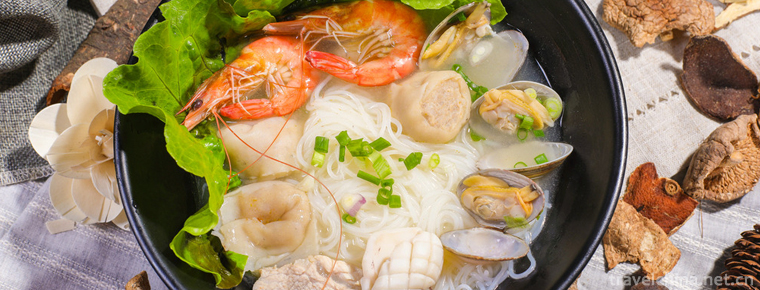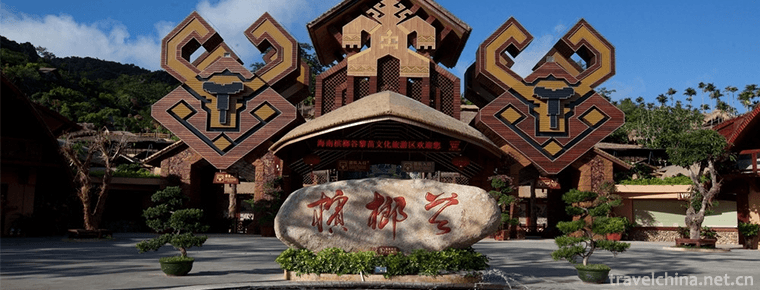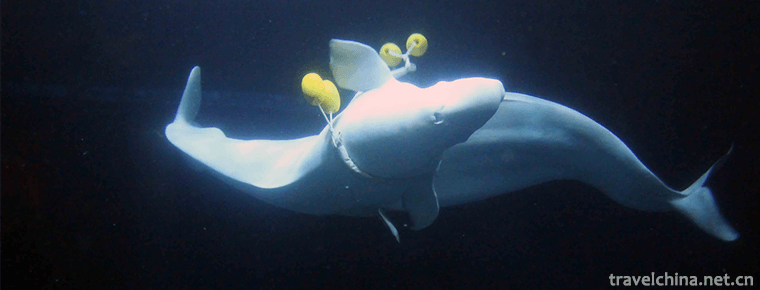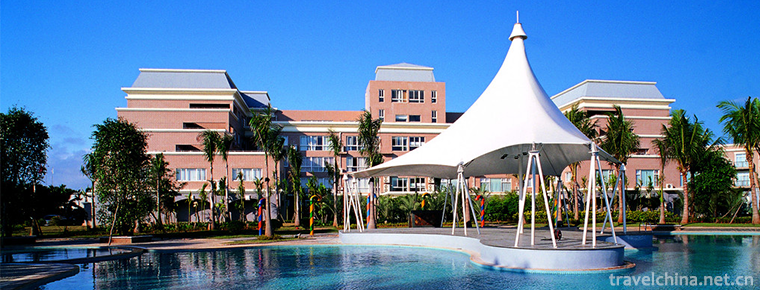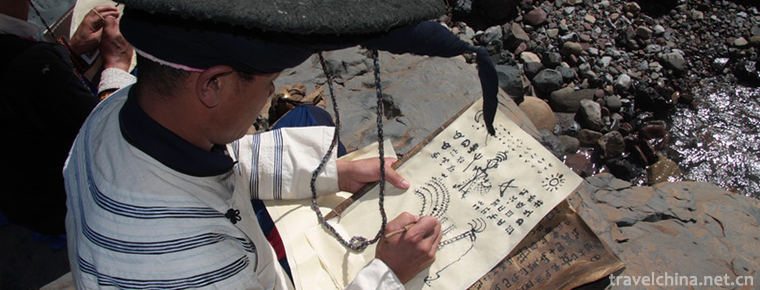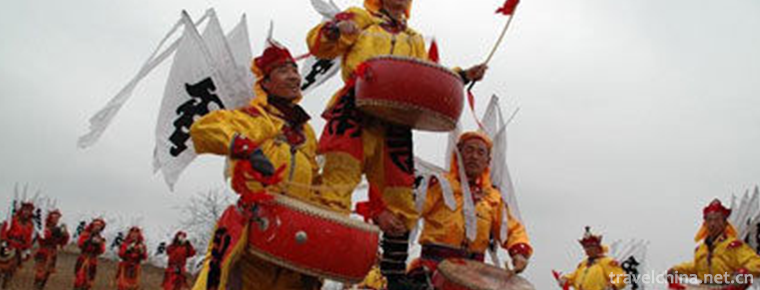Poyang Lake National Nature Reserve
Poyang Lake National Nature Reserve
Jiangxi Poyang Lake National Nature Reserve is located in the north of Jiangxi Province. It is a nature reserve for wildlife protection. The main protected objects are rare migratory birds such as white cranes and their wintering areas. The Nature Reserve belongs to inland wetland, and the main wetland types include lakes, permanent rivers, seasonal lakes, permanent freshwater herbaceous marshes and swamps.
The reserve was established in 1983, formerly known as "Poyang Lake Migratory Bird Reserve in Jiangxi Province". In 1988, it was promoted to a National Nature Reserve and renamed "Jiangxi Poyang Lake National Nature Reserve".
The reserve has distinct seasons and pleasant scenery. It is a famous tourist attraction.
geographical environment
geographical position
Located in the northwest corner of Poyang Lake, the reserve covers three counties: newly built, Yongxiu and Xingzi. It administers nine lakes, including Shahu, Dachaohu, Benghu, Zhushihu, Meixi, Xianghu, Dahu, Changhu and Zhonghu, with a total area of 224 K. Geographical coordinates are between 28 22 to 29 45 in the north latitude and 115 47 to 116 45 in the east longitude
Climatic characteristics
Poyang Lake Nature Reserve is a subtropical humid monsoon climate with abundant heat, abundant rainfall, long frost-free period and distinct seasons. The average annual temperature in the protected area is 17.1 C, the highest temperature in July is 29.1 C, and the highest extreme temperature is 40.2 C. The lowest temperature in January is 4.5 C, and the lowest extreme temperature is - 9.8 C. Frost-free period 270 days. Sunshine is abundant, with an average annual sunshine duration of 1970 hours, the most in August and the least in February. The average annual maximum temperature on the lake surface is about 0.3 C lower than that on the land, while the average temperature in January is about 0.5 C higher than that on the land. The water temperature is generally higher than that on the land, and the maximum temperature difference can exceed 4 C. The annual total radiation is 45 *10 kJ/, which is rich in solar energy resources in Jiangxi Province and even in the middle and lower reaches of the Yangtze River. Except in July, the scattered radiation is greater than the direct radiation in all other months. This is the result of the interaction between the large water body effect of Poyang Lake and the basin effect of Poyang Lake. The reserve is located to the south of Laoyemiao. Because of the narrow pipe effect of Lushan and Hukou waterways, Laoyemiao water area is a windy area in the lakes of the middle and lower reaches of the Yangtze River. The wind speed is relatively high. The wind direction is mainly northerly, with an average wind speed of 3.9 m/s and a maximum wind speed of 12-17 m/s. The annual precipitation in the reserve ranged from 744.1 mm to 2363.2 mm (the maximum appeared in 1954 and the minimum appeared in 1962), with an average annual precipitation of 1426.4 mm. Rainfall is abundant, but the time distribution is not uniform. Rainfall mainly occurs in April to June, accounting for 47.4% of the year. From November to January of the following year, there was little rain, and the precipitation only accounted for 9.9% of the whole year.
Geomorphic features
Poyang Lake Reserve is located at the confluence of Ganjiang River, the largest inflow river of Poyang Lake, and Xiuhe lower reaches of Xiuhe River. During the flood season, the water level fluctuation area and its adjacent shallow water area are widely exposed during the dry season. It is located in the transitional zone from the land delta plain to the perennial flooded area of the lake area, i.e. in front of the delta. Marginal sedimentary belt. The elevation of typical wetland section in the reserve is generally 18-13 meters, and the terrain is flat. In terms of geomorphological composition, wetlands are composed of natural levees, gentle slopes and saucer depressions on both sides of branch channels. In the structure of sedimentary section, the surface elevation from high to low is composed of high overbank (grass beach) - low overbank (including transitional sparse grass beach and mud beach) - water depression and other sedimentary units. The sediments are mainly fine silt, extremely fine silt and clay. Locally there are hills, including Dingjiashan, Jishan and Sun Mountain. In terms of landscapes, the hills above are on the plateau of wetland plain in dry season, and become Island mountains surrounded by lake water in flood season. Nine lakes in the reserve are situated on both sides of Ganjiang and Xiuhe rivers, with an elevation of 14-17 meters. The terrain is low and flat, with a slight tilt towards Poyang Lake. Because of the river bed moving back and forth and branching, fan-shaped alluvial is formed, and the sediment is deposited into sand dams, natural dikes, lakes and marshes and other unique landforms. Among the wetlands of Poyang Lake, the wetlands at 16-12 meters of Wusong elevation are most suitable for wintering migratory birds, which are mainly concentrated in 9 depressions around Wucheng Town. In addition to having the most suitable environment for migratory birds to live through winter, human economic activities are also less, basically retaining the structure and function of natural wetlands.
hydrographic features
The reserve is a semi-humid area with stable relative humidity. Poyang Lake, formerly known as Pengli and Pengze, is the largest freshwater lake in China. It is the confluence of Ganjiang, Fuhe, Xinjiang, Raohe and Xiushui rivers. It is divided into two lakes, 170 km long in North and 170 km long in South and 50-70 km wide in East and west. The lake water flows north through Jiujiang River into the Yangtze River. Under the influence of Xiuhe and Ganjiang River systems, there are obvious seasonal changes in water level in the lake area. Every October to March of next year is the dry season, when the water level is only 500k_and the low water level is only 13m. At the lowest water level in late winter, the lake water is only 0.2-0.8m, forming nine independent seasonal lakes and grasslands, which expose the bottom of the lake and form muddy beaches and grasslands as open as wilderness; April to September is the season of high water, with the water level of about 3000k_and the highest water level reaching 21m and 9 elevations. The lake and Poyang Lake are connected and integrated, forming a vast ocean of water in Poyang Lake, which has the landscape of the water country. Therefore, people often use "a line of dry water, a piece of rich water" to describe the water level change landscape of Poyang Lake. Poyang Lake has the characteristics of typical wetlands. According to its origin and distribution, there are mainly intertidal beaches and lakeside wetlands formed by lake-entering deltas; River Wetlands formed by seasonal floodplains and flooding depressions; lake wetlands formed by beaches and lake-entering deltas in water level fluctuation areas. The wetland area of Poyang Lake (i.e. the water level fluctuation area and its adjacent shallow water area) is more than 2 500 km2, accounting for 78% of the area of Poyang Lake.
The nine lakes are located in the front of the West Branch of Ganjiang River and the tail of Xiuhe River entering the lake continent. Their hydrological characteristics are influenced by the hydrological conditions of the West Branch of Ganjiang River, Xiuhe River and Poyang Lake. The annual variation trend of water level in the reserve is consistent with that in Poyang Lake. The monthly average water level is the highest in July, followed by August, the lowest in January and the second in December. The highest water level of Ganjiang Wucheng Station is 22.29 m and the lowest water level is 10.46 M. The highest water level of Duchang Station is 21.78 m and the lowest water level is 8.84 M. The annual maximum water level of Wucheng Station and Duchang Station of Poyang Lake in Ganjiang River generally occurs from May to September. The annual minimum water level of the two stations is 10.46-12.61 m and 8.84-11.63 m, with an average of 11.34 m and 9.77 m, respectively. It generally occurs from December to March of the following year.
The average water temperature in Poyang Lake area is 18.3 C, which is 1.2 C higher than the average temperature. The extreme minimum water temperature is 0 and the extreme maximum water temperature is 37.8 over the years. The monthly average water temperature is the highest in August and the lowest in January, with an annual difference of 21.8-26.0 (?) C and an average of 24.3 (?) During the flood season, the lakes and grasslands in the reserve were flooded and integrated with the Great Poyang Lake. The main flow of the lake was throughput. Among them, gravity Lake current is the main type in the middle and low water level period, and top-supported Lake current is the main type in the middle and high water level period. There are also often inverted Lake currents. The flow direction of top-supported Lake current is basically the same as that of gravity Lake current. The West Branch of Ganjiang River and Xiuhe River are the major sediment-laden rivers in Poyang Lake, with annual sediment transport of 28.440 million tons and 2.246 million tons (including suspended load and bed load) respectively. The sediment concentration of lake water varies with the change of water level, which is closely related to each other. The reserve is a serious area of sediment deposition in Poyang Lake. The average annual siltation height of the tributary-tail river bed in Jiangxi Province is about 20 mm, and the siltation speed of the natural embankment is relatively slow. The average annual siltation speed of the depression in the natural lake embankment is about 10-15 mm. The siltation speed of the depression in the natural lake embankment is very slow, all below 1.5 mm/year.
Historical evolution
Establishment of provincial nature reserves approved by Jiangxi Provincial People's Government in 1983.
In 1988, it was promoted to a national nature reserve with the approval of the State Council.
In 1992, it was listed as one of China's 40 A-level protected areas by the Ministry of Forestry and the World Wide Fund for Nature, and in the same year it was listed in the International List of Important Wetlands.
In 1997, it was included in the Crane Protection Network of Northeast Asia.
Resource situation
Animal resources
Poyang Lake is one of the areas with the richest biodiversity in wetland. It attracts many rare and endangered waterfowl. There are many kinds and large numbers of overwintering rare birds. The bird and other animal resources in the area are briefly introduced as follows:
Zooplankton
There are 46 species of zooplankton (including only protozoa, rotifers, Cladocera and copepods), including 14 species of protozoa belonging to 9 families and 10 genera, 18 species of rotifers belonging to 10 families and 14 genera, 8 species of Cladocera belonging to 6 families and 7 genera, and 5 species of copepods belonging to 4 families and 5 genera. Most of the protozoa in this area are of worldwide distribution, but mostly belong to Oriental geographic elements; rotifers and Cladocera mostly belong to wide-temperature species; copepods mostly belong to Oriental species.
insect
There are 227 species of insects in 10 orders, 63 families and 227 species in the reserve, of which 6 species are newly recorded in Jiangxi Province. Their floristic structure is quite complex, and they are related to the world in varying degrees. The floristic composition of the reserve is dominated by the common species of the Oriental and the Ocean and the Paleo-Arctic, forming the overlapping phenomenon of the Paleo-Arctic and the Oriental flora.
Mollusk
There are 42 species of molluscs recorded in the whole Poyang Lake, and only 15 species are recorded in the Poyang Lake Nature Reserve, of which 10 species are gastropods, belonging to 3 families and 7 genera, and 5 species are valves and gills, belonging to 3 families and 4 genera. Oncomelania hupensis is an intermediate host of Schistosoma japonicum.
fish
Poyang Lake is rich in fish resources. There are 122 species of fish belonging to 21 families. There are not only settled Lake fish, but also returning and semi-returning fish. Among them, Cyprinidae is the most abundant fish, accounting for 53.3% of 65 species, followed by Anabaenaceae, Loach and Silverfish. There are more than 30 kinds of carp, crucian carp, loach, green, grass, silver carp, bighead carp and so on.
The Chinese sturgeon and white sturgeon, which are recorded in Poyang Lake, are the first-class protected animals in China, and the shad has been listed in the Red Book of China's endangered animals to protect fish.
Amphibians and Reptiles
There are 13 species of amphibians and 50 species of reptiles along the lake and hilly areas of Poyang Lake.
birds
There are 310 species of birds in the reserve, belonging to 17 orders and 55 families, including 10 species of first-class protected animals and 40 species of second-class protected animals. 153 species of birds belong to the Sino-Japanese Migratory Bird Protection Agreement, accounting for 67.4% of the total number of birds in the agreement; 47 species belong to the Sino-Australian Migratory Bird Protection Agreement, accounting for 58% of the total number of birds in the association.
Overwintering waterfowl are mainly distributed in nine lakes of Poyang Lake Nature Reserve, and the most suitable habitat for migratory birds is 13.5-17 meters above sea level. White cranes, white-headed cranes, White-naped cranes, grey cranes, Oriental storks, black storks, herons and parrots, and other wading birds, mainly inhabit lakeside, mudflats or shallow water areas. White-headed cranes, white-pillowed cranes and grey cranes also often travel to grasslands, and Oriental storks often live in harvested farmland. Swans, geese and ducks, such as geese and geese, live in deep water, but the Red duck is more special, mainly in grass or lakeside mudflats.
Poyang Lake National Nature Reserve wintering migrant birds are characterized by a large number of rare and endangered species. The Poyang Lake National Nature Reserve is the most important wintering land for white cranes, Oriental storks and wild geese in the world. There are at least 1,000 white cranes and up to 3,100 white cranes wintering in the Poyang Lake National Nature Reserve every year. In recent years, there are more than 1,000 Oriental White Storks wintering in the Poyang Lake National Nature Reserve, up to 1,873, and 10,000 red geese, up to 40,000. 。 Poyang Lake National Nature Reserve is also an important wintering place for bustard, stork, swan, geese and spoonbill.
Mammals
According to incomplete investigation, there are 45 species of mammals and 31 species of protected areas in the whole Poyang Lake area. There are four national second-class protected animals, including muntjac, pangolin, porpoise and civet.
plant resources
There are 2 families, 3 genera and 3 species of bryophytes, 8 families, 11 genera and 12 species of pteridophytes, 5 families, 8 genera and 11 species of gymnosperms, 80 families, 330 genera and 430 species and varieties of angiosperms in the reserve and its surrounding areas, totaling 476 species and varieties of 359 genera and 128 families.
According to the nature, habitat, structure and species composition of plant communities, the vegetation in Poyang Lake Nature Reserve is divided into two types: natural vegetation and cultivated vegetation. Natural vegetation can be divided into: sand dune terrace plant community, including 7 clusters; red soil terrace plant community, including 7 clusters; Lake wetland plant community, including 32 clusters; River floodplain plant community, including 7 clusters; aquatic plant community, including 1 cluster.
The flora of Poyang Lake Nature Reserve has the following characteristics:
1. There are many families and genera in the world.
2. There are many tropical families and genera, but few genuinely typical tropical families and genera.
3. Temperate zone has many components, forming the characteristics of North-South convergence, East-West convergence and multifaceted.
4. Endemic Species: Only two endemic local plants have been found, i.e. Yongxiu Willow Leaf Rupture and Short Quadrangular Water chestnut.
phytoplankton
There are 50 species of phytoplankton, belonging to 31 genera and 7 phyla. Among them, 21 species belong to Silicon Bath Gate, 17 species belong to Green Bath Gate, 5 species belong to Blue Bath Gate, 3 species belong to Bare Bath Gate, 2 species belong to Hidden Bath Gate, 1 species belong to Golden Bath Gate and 1 species belong to Armor Bath Ga The number of baths in Poyang Lake is not large, of which the Great Lake Lake is a middle trophic type, while the other lakes are a poor trophic type with an order of millions of cells per liter.
Institutional setup
The Poyang Lake Reserve, which belongs to the Forestry Department of Jiangxi Province, is a fully funded public institution at the official level. It was listed in public administration in 2011. The reserve currently has a staff of 100, 84 and 10 civil servants. The staff of grass-roots protection stations accounted for 62% of the total number. Fifty-two (58%) of the employees have college or higher education related to nature reserve management, 12 have senior or middle professional titles, 5 have postgraduate education and 3 are postgraduates.
The Bureau has eight functional departments, namely, office, personnel department, scientific research management department, resource management and nursing department, finance department, project management department, publicity and education department and community affairs department. There are four protection management stations in Wucheng, Dahuchi, Shahu, Dachaohu, and seven protection monitoring stations in Jinxian, Yugan, Poyang, Duchang, Hukou (acceptance), Jiujiang (construction started), Xingzi (to be built).
Characteristic tourism
birdwatching
Service facilities
The reserve has bird-watching dormitories (double standard rooms, air conditioning, water heaters, telephones, cable TV, etc.) and canteens in Nanchang and bird-watching areas. In the bird-watching areas, there are also specimen halls, bird-watching platforms, bird-watching high-speed boats, double-barrel and single-barrel telescopes, Gaotong shoes and other bird-watching facilities.
(Photo Source of "Bird Paradise - Poyang Lake")
Application for Bird Watching Procedure
All visitors need permission to enter the reserve. Bird-watching applications can be submitted directly to the reserve for bird-watching procedures. The main contents of the application include: the number of tourists, name, nationality, age, occupation, travel days and time, and where to go after the tour.
Bird watching traffic
After arriving in Nanchang, you can drive directly to Wucheng by Nanjiu Expressway or to Shahu Protection Station and Dachahu Protection Station for bird watching. If you are a foreign visitor, you can first take a flight to Hong Kong and then transfer to Nanchang. If you stay in Hong Kong for a long time, you can visit Mai Po Reserve (located in the New Territories) to see the wintering waterfowl there.
After arriving in Wucheng, you can enter the lake area by bus or motor wooden boat for bird-watching, which takes about 1 hour. It takes 2 to 3 hours for individual bird-watching spots.
Ornamental birds
In winter, there are 124 species of waterfowl. Common are white cranes, white-headed cranes, white-pillowed cranes, goose ducks and snipes, as well as forest birds.
Summer is mainly egrets and forest birds, such as egrets, pool herons, night herons, cattle egrets, egrets, breeding birds such as wild ducks, Snipes and so on.
Spring and autumn are mainly migratory birds from south to north, such as Passeriformes such as cormorants, cormorants, cormorants and so on.
Best Bird Watching Period
Every year from mid-October to mid-March of the following year.
Wucheng ancient town
Located at the intersection of Poyang Lake, Ganjiang River and Xiushui River, it has been the radiation place for Jiangxi's water transportation and trade since ancient times. Wucheng Ancient Town is one of the four famous towns in Jiangxi Province. For a prosperous time, Wang Bo, Su Shi, Wen Tianxiang, Zhu Yuanzhang, Sun Yat-sen and other historical celebrities have been involved in this town. There are many cultural relics. The broken walls, inscriptions and stone inscriptions in stone dikes, Dianjiangtai, Ji'an Guild Hall and Wanghu Pavilion all tell visitors about the vicissitudes of history.
The main existing historical sites in Wucheng are Wanghu Pavilion, Ji'an Guild Hall, Hunan Guild Hall, Dutch Church, Zhongshan Park and so on.















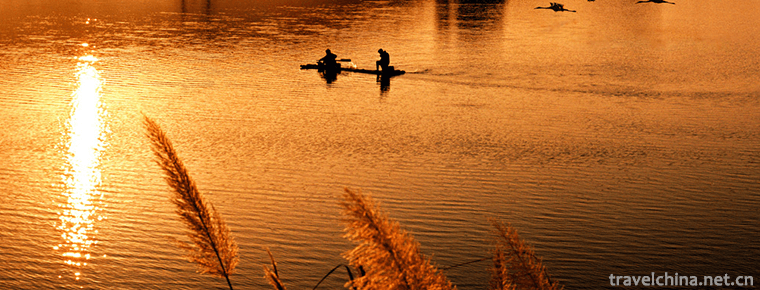
-
Mahjong
Mahjong, originated in China, is commonly known as Sparrow in Guangdong, Hong Kong and Macao. It is a game invented by the ancients of China,.
Views: 159 Time 2018-11-13 -
Betelnut Valley Limiao Cultural Tourist Area
Hainan Betelnut Valley Limiao Cultural Tourist Area was established in 1998. It is located in the Ganshiling Nature Reserve at the junction of Baoting County and Sanya City.
Views: 112 Time 2018-12-12 -
Beijing Ocean Hall
Beijing Ocean Hall, located on the North Bank of Changhe River in Beijing Zoo, is adjacent to Beijing Exhibition Hall, Astronomical Museum and Capital Stadium in the south. It covers an area of 120,00.
Views: 112 Time 2018-12-26 -
Jinjiang hot spring
Jinjiang Hot Spring is located on the Bank of Jinjiang River, Datian Town, Enping City, which is the hometown of hot springs in China. It is backed by Qixingkeng primitive forest, deep mountains and g.
Views: 157 Time 2019-01-29 -
Bemo painting
Bimo Painting of the Yi Nationality is a kind of picture on paper or animal skin, bark, bamboo slips, stone, wooden boards and other carriers painted by Bimo, a priest of the Yi Nationality..
Views: 245 Time 2019-04-04 -
Changzhou comb
Comb, also known as Chlamys, is one of the eight hairdresses in ancient China. It is a local traditional handicraft with a long history in Changzhou City, Jiangsu Province..
Views: 256 Time 2019-04-16 -
Lv Jiahe Folk Song
Lvjiahe Folk Song is a kind of folk song which is popular in Lvjiahe Village, Guanshan Town, Danjiangkou City, Hubei Province. Located in Wudang Mountain Scenic Area, the village retains a large numbe.
Views: 198 Time 2019-05-15 -
Shaolin Kung Fu
Shaolin Kungfu, also known as Shaolin Wushu, is one of the famous schools of Wushu in China. It has a long history and profound influence. It is an important part of Chinese traditional Wushu. The mos.
Views: 165 Time 2019-06-14 -
She Nationality Medicine
She medicine is mainly distributed in Jingning She Autonomous County of Zhejiang Province and in some mountainous areas of Fujian and Jiangxi provinces. She nationality has no written language and is .
Views: 128 Time 2019-06-14 -
Triple Drum Jump
Dancing three drums is a kind of opera which is popular in counties (cities) such as public security, Shitou, Jiangling and Songzi. It evolved from the funeral board and funeral drum song of sacrifici.
Views: 256 Time 2019-06-21 -
Longhua Town
The synonym Longhua ancient town generally refers to Longhua town.
Views: 147 Time 2020-10-16
